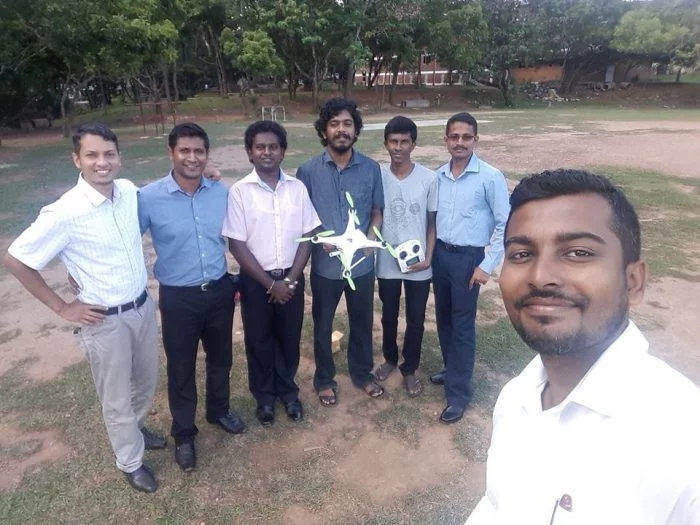On the 14th and 15th of September 2017, we saw the 35th National IT Conference also known as NITC 2017 take place. Furthermore, this year it took place in partnership with the SEARCC Conference 2017. And this was in parallel to the IFIP (International Federation for Information Processing) General Assembly. Over the course of two days, the conference saw 60+ individuals in attendance from over 50 countries. Here’s what we found on Day 01 of NITC 2017.
Saving the CIO
The first speaker of the day was Dr. Nick Tate – President of SEARCC. He opened his keynote by sharing four key reasons as to why CIO’s get fired. These reasons were: cybersecurity breaches, project disasters, availability failures and system collapse. He then delved into the aspect of cybersecurity and why it was so important for CIO’s.

To explain the importance of cybersecurity, he shared the impact of a few data breaches such as the recent Equifax hack. He shared that is data is stolen and then utilized for organized crime. Yet data breaches are only one form of cybersecurity risks that companies face. He then went on to share the cost of failed IT projects, which was between $3 Trillion and $6.2 Trillion per year.
As such, companies need to ensure they have skilled IT staff. Establishing teams with skilled IT staff is one of the top priorities for a CIO. Yet, the responsibility shouldn’t fall completely on the shoulders of the CIO. Effective IT and cybersecurity governance is crucial in order to succeed. Having shared a framework for instituting effective governance, Dr. Nick concluded his keynote by sharing a checklist that CIO’s needed to follow to ensure success.
The Seoul Accord
The second speaker of the day was Prof. Dongyoon Kim – Chair of the Seoul Accord. He opened his keynote by introducing the Seoul Accord, which is a multilateral agreement among agencies responsible for accreditation or recognition of tertiary-level computing and IT-related qualifications. The members of the Seoul Accord are various IT bodies across the region who are known as signatories. Prof. Kim shared that he hopes Sri Lanka will become a provisional member soon if CSSL signs the Seoul Accord.

After highlighting some of the benefits of the Seoul Accord, Prof. Kim introduced the Bebras Computing Challenge. This is a challenge that aims to introduce computational thinking to students. It’s organized in 30 countries and aims to get students excited about computing. It works by giving each participant 45 minutes to answer 15 multiple choice questions. Prof. Kim concluded by sharing some examples of problems given as part of the Bebras Challenge.
Towards a digital Sri Lanka
The next keynote speaker we saw was Indika De Zoysa – Senior Consultant at ICTA. His keynote shared many of the digital initiatives being pursued by the government. One of these projects was the upgrade of the Lanka Government Network to connect 860 government offices by January 2018 in its first phase. After speaking on the Public WiFi project, he introduced the Digital Health initiative.

Indika then moved on to speak of the ambitious plan to revamp the education system. This plan calls for students to have tablets, connect the schools via broadband, and ensure that the schools find digital content via an LMS. Furthermore, this ambitious plan also involves creating innovation halls in schools with devices such as 3D printers and Raspberry Pi’s, along with a digital policy for education.
Ultimately, what is the goal of these initiatives? A workforce of 360,000 people in the IT industry, 1000 startups, and an IT industry that has an export value of $5 billion by 2022.
An introduction to Green Software Engineering
Following Indika, we saw Dr. Anirban Basu – Past President of the Computer Society of India take the stage. His goal was to share with everyone the concept known as Green Software Engineering. This concept refers to looking at the environmental impact of software when building it.
Dr. Anirban argues that this is something that needs to be taken into account at each level of software development. This is because everyone with a smartphone contributes to global warming. But what are the challenges Green Software Engineering faces?

Dr. Anirban shared that some of the challenges faced is due to the lack of metrics to measure the environmental impact of software and tools to help developers write environmentally friendly code. He concluded by sharing some approaches and case studies that have been conducted to improve the energy efficiency of software.
Who can you trust on the internet?
The final keynote speaker on the Day 01 of NITC 2017 was Dr. Kai Rannenberg. He opened by sharing an in-depth explanation of the process that occurs behind the scenes when you login into a website or app using Facebook. But Dr. Kai argued that during this process too much information is shared. Too much information about yourself and of the particular website you’re logging into.
He then proposed two solutions to this problem: partial identities and attribute based credentials. Having explained the solutions, Dr. Kai then went on to share a few case studies conducted by ABC4Trust to ensure data privacy and anonymity. One case study was with an institute to conduct anonymous polls to rate courses without lecturer’s knowing the identities of the participants.

Dr. Kai concluded his session by sharing the requirements for a privacy-friendly internet. These requirements are decentralization, partial identities and identifiers, minimum disclosure, redactable signatures, and strong sovereign assurance tokens.
The breakaway sessions
Following the keynotes, NITC 2017 was split into three breakaway sessions that took place in parallel. The parallel sessions on Day 01 focused on: the CIO, digital inclusion, e-X, and Digital Media & Broadcasting. Additionally, a separate parallel session took place where academic papers were presented. While we can’t cover all of the sessions, here’s what we learned at two of these breakaway sessions.
The Future of VR and AR
Following the keynotes, NITC split into three parallel tracks with multiple sessions. One the sessions we saw was by George Coldham on the future of Virtual and Augmented Reality. He opened by introducing us to what exactly Augmented Reality (AR), Virtual Reality (VR), and Mixed Reality (MR) is. Having explained the differences between the three, he delved into the topic of gamification.

George shared Duolingo as an example of gamification and said, “Gamification is powerful but a distraction when not done well.” George concluded his session by sharing his vision of the future. This is a future where we have augmented reality glasses with real-world pop-up ads. Artificial Intelligence will take care of our mundane tasks. Digital currencies will replace our normal currencies. We generate our own electricity, which we sell to our neighbors.
And our work will be based on our interests and AI will take care of everything else. Yet, George believes that people will eventually be unhappy with how much technology will take over our lives. He argues that there will be some who intuitively understand technology and others who wish for a simpler time. George left the audience with the question, “Technology excludes those who can’t get to the starting line. How do we change this?”
Disrupting Startups
The next great session that we found during the breakaway sessions was by Yohan Ramasundara – Secretary General of SEARCC. His session was geared towards startups and success. He opened by saying, “A startup is a company working to solve a problem when success is not guaranteed.” Yohan elaborated on this by saying that it is believed that 80% of startups fail, but the actual number is 90%.

But why do startups fail? Yohan shared a few reasons, which we covered in a previous article. He went on to say that s startup needs the right team. But it doesn’t always need a unique concept. As an example, he selected PickMe to show that while it follows the same concept of Uber it is localized for Sri Lankans. Yohan went on to share that the demand for software technologies will grow and create new jobs. He concluded with the words, “An idea without execution is not worth much.”
The end of NITC 2017 Day 01
With the conclusions of the breakaway sessions, Day 01 of NITC 2017 came to an end. However, this was only the beginning. Stay tuned to know what else we learned at NITC 2017 on Day 02.






GIPHY App Key not set. Please check settings